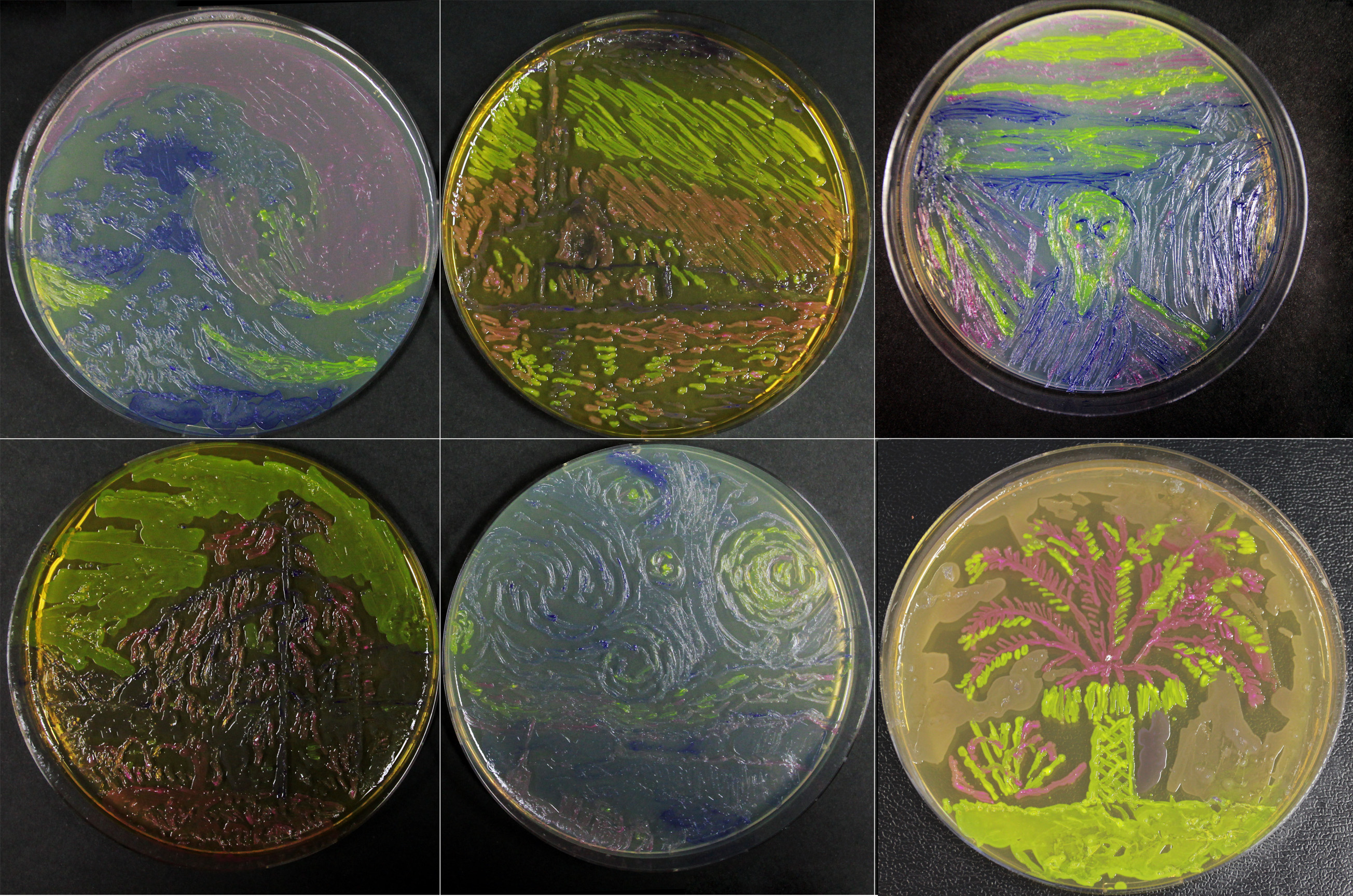Difference between revisions of "Part:BBa K639003:Experience"
(→User Reviews) |
|||
| Line 67: | Line 67: | ||
<b> Conclusion: MG1655 transformed with either empty vector (EV) control or mCherry stress biosensor (BBa_K639003) vector are viable and can grow in waste conditioned media. Therefore waste conditioned media is an appropriate and novel experimental media with which to characterise biobricks within a mixed waste/landfill context. These data are also characterisation of an existing biobrick (BBa_K639003) </b> | <b> Conclusion: MG1655 transformed with either empty vector (EV) control or mCherry stress biosensor (BBa_K639003) vector are viable and can grow in waste conditioned media. Therefore waste conditioned media is an appropriate and novel experimental media with which to characterise biobricks within a mixed waste/landfill context. These data are also characterisation of an existing biobrick (BBa_K639003) </b> | ||
| + | |||
| + | <h3>Painting</h3> | ||
| + | |||
| + | In addition to this, we have shown that bacterial paintings are achievable with this amazing biobrick (red): | ||
| + | [[File:Originals_combined_small.jpg|600px]] | ||
Revision as of 18:45, 29 September 2013
This experience page is provided so that any user may enter their experience using this part.
Please enter
how you used this part and how it worked out.
Applications of BBa_K639003
User Reviews
UNIQc9f807a3fd5b0320-partinfo-00000000-QINU UNIQc9f807a3fd5b0320-partinfo-00000001-QINU
Imperial iGEM 2013
Stress biosensor characterisation (BBa_K639003)
Originally we intended on using BBa_K639003 to detect whether our cells were stressed when grown with an array of potentially toxic plastics and degradation products. However, as our data below shows, this biobrick is very leaky. As an alternative we utilised the stress sensor as a marker for our chassis E. coli (MG1655) for an array of qualitative and quantitative waste growth and toxicity assays.
Note: The stress sensor induces mCherry production through a mechanism involving the ppGpp stress response. Induction with IPTG bypassess this mechanism through an inhibition of LacI, resulting in mCherry expression.
Long term waste growth assays
These assays were designed to test whether our chassis, E. coli (MG1655) could grow directly with waste over a long period of time. Details about waste media and waste conditioned media can be found here [http://2013.igem.org/Team:Imperial_College/Protocols Imperial 2013 protocols]
Waste media
Conclusion: MG1655 E. coli are viable and grow on mixed waste alone. Therefore we have established that our chassis could survive in a mixed waste bio-reactor context, which is validation of our concept to industrially implement our system.
Waste conditioned media
These assays were designed to test whether our chassis, E. coli (MG1655) could grow with waste conditioned media (WCM) over a period of 24-48 hours. Waste conditioned media is a filter sterilised version of the waste media and was designed for several reasons; Firstly we were unsure whether mixed waste would be toxic to Ecoli and hence a less concentrated version may be more suitable and secondly large chunks of waste would prevent accurate OD600 measurements and therefore we decided to filter out the largest chunks.
 Growth assay in waste conditioned media (WCM). E. coli (MG1655) transformed with mCherry stress biosensor. were grown with LB-based waste conditioned media at 37ºC, with shaking. Error bars represent S.E.M., n=4 |
Conclusion: MG1655 transformed with either empty vector (EV) control or mCherry stress biosensor (BBa_K639003) vector are viable and can grow in waste conditioned media. Therefore waste conditioned media is an appropriate and novel experimental media with which to characterise biobricks within a mixed waste/landfill context. These data are also characterisation of an existing biobrick (BBa_K639003)
Painting
In addition to this, we have shown that bacterial paintings are achievable with this amazing biobrick (red):









